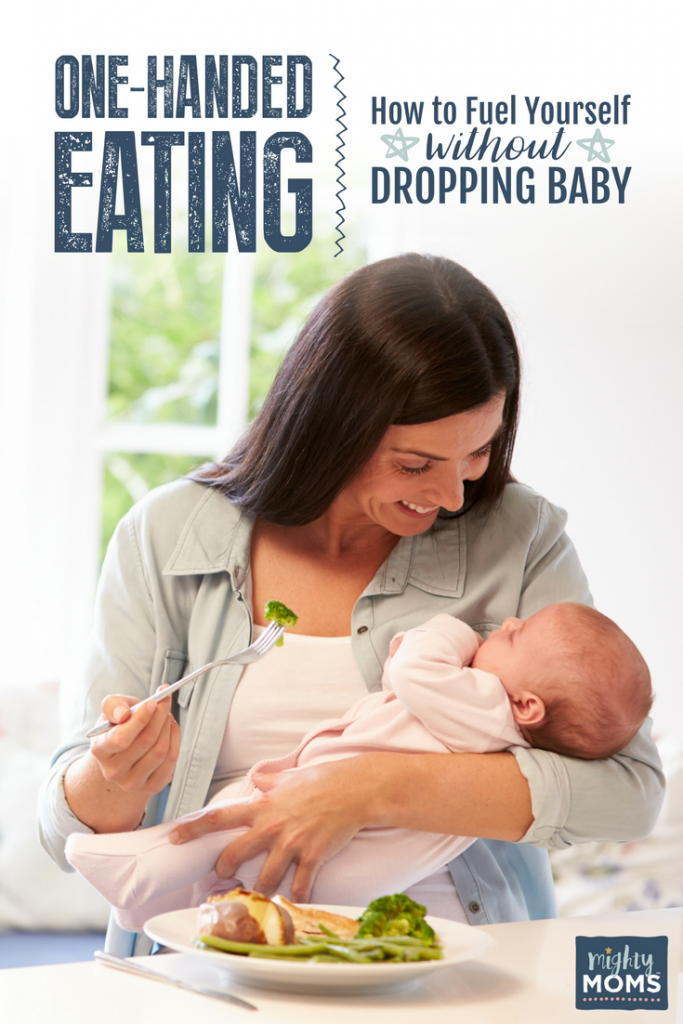Feeding baby red ear slider turtles
You Need to Know This About Baby Red Eared Slider Care
Copyright: inuella123 / 123RF Stock PhotoBaby turtles can be tricky to take care of. This is what you need to know about baby red-eared slider care.
In general, taking care of a baby red-eared slider is not radically different from taking care of an adult. The biggest difference is feeding frequency. Everything else, such as your aquarium size, basking spot setup and lighting don’t need to change.
That being said, a great deal of your success in raising a baby red-eared slider comes BEFORE you even bring it home.
Red-eared sliders are tough animals that are able to live, and even thrive, in dirty, unclean environments in the wild. However, before you commit to purchasing and taking on a baby slider, you need to make sure it is healthy first.
Otherwise, your turtle will likely cost you a few expensive trips to the vet.
Red-Eared Slider Baby
A red-eared slider baby usually has a very green pigment on both their shell and skin. They also have the famous red line that starts on the back of their ears and continues down their body.
Baby red eared sliders eat a combination turtle pellets, insects, and some vegetables.
Your baby red-eared slider’s diet should be primarily protein-focused.
Here is a summary of my top picks for baby red-eared slider food.
My Top Pick Tetra Tetrafauna Pro Turtle Food | Price: ~$10 Nutrition: High Protein and Vitamin D3 | Check Price On Amazon | |
| Aquatic Turtle Medley Food - Freeze Dried Shrimp & Mealworms for Aquatic Turtle | Price: ~$15 Nutrition: High Protein and Fiber | Check Price On Amazon | |
| Fluker’s Buffet Blend Turtle Food | Price: ~$8 Nutrition: High Protein and Vitamin A | Check Price On Amazon | |
| Zoo Med Natural Aquatic Turtle Food | Price: ~$15 Nutrition: High Protein and Vitamin C, D3, E | Check Price On Amazon |
The absolute best way to make sure your baby red-eared slider gets enough nutrition is by using a good turtle pellet as its staple food. I recommend either Mazuri or Tetra for pellet food. For more information on both as well as why I recommend these two brands, check out my article on the best turtle food brands.
I recommend either Mazuri or Tetra for pellet food. For more information on both as well as why I recommend these two brands, check out my article on the best turtle food brands.
You can also use other meat and insect sources to supplement the pellets. A baby red-eared slider would definitely eat any of the following animals/insects:
- Mealworms
- Earthworms
- Gut-loaded crickets (crickets that have eaten carrots or other vegetables).
- Small fish
- Dried shrimp
- Other small insects
If you have already bought your tank, you should check out my list of the best turtle tank accessories.
How often should I feed my baby red eared slider?
Baby red eared sliders should be fed every day. After reaching 6 months switch to every other day feedings.
You can estimate the approximate age of your baby red-eared slider by measuring its outer shell vertically straight down the middle. If it is under 2 inches in length, feed it every day. If it is anywhere from 2 inches to 3.5 inches, you can start feeding it pellets every other day.
If it is under 2 inches in length, feed it every day. If it is anywhere from 2 inches to 3.5 inches, you can start feeding it pellets every other day.
Speaking of feedings. How much food should you be offering them?
Feed them enough food that would be roughly the size of their head. So, if you are giving them mealworms, or small fish, use however much would be about the size of their head. This is about a level tablespoon.
Another common strategy is to feed them as much as they can eat in 5-10 minutes. Don’t let them eat for more than 10 minutes, however, as this can lead to overfeeding.
Buying A Red-Eared Slider TurtleKeep these 4 things in mind when buying or obtaining your turtle.
First, look at the turtle’s shell. It doesn’t necessarily have to be bright, as some sliders’ shell colors can be dull or darker. However, it should have a “glossy” look to it.
If the shell has white markings or a “dust-like” white substance encased all around its shell, it could be a sign that the turtle has been sitting in hard-water for too long.
However, if the turtle’s shell is dull rather than radiant, it may be a sign that the turtle has not had access to adequate UV-B light.
Secondly, there shouldn’t be any exposed or broken parts on its shell. If there, this could be a sign of an impending infection or a more serious health problem such as red eared slider shell rot.
Next, check its movement and its eyes. Does the turtle make slow or exaggerated movements? If so, this could be a sign of an infection or illness of some kind. Eyes that have an overall yellow or red tinge could also be a sign of serious illness.
Lastly, if at all possible, make sure that it is able to swim properly. If the turtle has a respiratory infection, it won’t be able to dive down into the water and instead will only be able to float.
Now, I’ve got to be honest. Raising a healthy red-eared slider requires some luck.
Here’s the thing. Even healthy, vibrant red-eared slider turtles are subject to sudden health problems and even death. Even if you do everything right, there will always be a few turtles that simply won’t be able to live out their full lives.
Even if you do everything right, there will always be a few turtles that simply won’t be able to live out their full lives.
This has nothing to do with whether or not you are a good caretaker. It’s simply a reflection of nature.
Thus, it is crucial that you try to stack the deck in your odds as much as possible, by making sure that your red-eared slider baby is already healthy, to begin with.
How to care for a baby red eared slider turtle?The key to caring for a baby red eared slider turtle is to provide a balanced diet, proper lighting, adequate basking spot, and a high power filter to maintain clean and healthy water. I will cover each of these topics in the sections below.
What Do I Do If My Baby Red-Eared Slider Won’t Eat?This is incredibly common, especially in the days right after getting a baby red-eared slider.
First things first. Don’t feed it vegetables or plants. It probably won’t eat them.
It probably won’t eat them.
Virtually all turtles prefer protein-based foods as these foods are often few and far between in their natural environment. So, it’s highly unlikely your baby slider is going to be eating any vegetables that you give it, especially if you are also feeding it a protein-source.
This is completely normal.
As your slider ages, you’ll need to start balancing out its diet in favor of dark, leafy green vegetables. In fact, eventually, you’ll be feeding it a protein source just once or twice a week.
So, expect your slider to refuse or ignore vegetables and go for the protein.
But, what if your baby slider is also ignoring the protein?
The most common reason a baby red-eared slider refuses to eat is stress. This stress is almost always the result of being moved into a new aquarium or habitat. What usually happens is your baby turtle will retract into its shell for most of the day. Or it will just sit somewhere, motionless.
Keep offering it turtle pellets. After a few days it will start eating them.
Now, if a week goes by and your baby red-eared slider STILL isn’t eating, there may be something else at play.
Here’s my advice if your baby red-eared slider won’t eat.
- It may not be used to the food that you are giving it. Offer it a variety of different proteins, such as mealworms, worms, crickets, small fish, small shrimp, turtle pellets, etc. It may simply be a very picky eater.
- If your baby slider isn’t eating anything for days going into weeks, it may be sick. Check for signs of common illnesses. After you find the most likely culprit, treat accordingly.
- There may be something in or around its aquarium that causes it continual stress. Consider making alternations to your baby red-eared slider’s habitat, such as; moving it away from high-traffic areas, checking the temperature, UV light, etc.

- Give it time. If you’ve checked for signs of illness and checked the tank for anything which may be causing to stress, you may simply need to give your baby slider some more time. It should start eating something within a week.
- If after a week or so it is still not eating, try calling your local vet for further instruction.
Speaking of stress from its aquarium or habitat, what exactly will you need? Here’s the bare minimum.
How Do You Set-up A Baby Red-Eared Slider Tank?If you want your baby red-eared slider to grow up healthy, it is crucial that the environment that it is placed in can meet all its needs. If you want to spice up your tank, you should read my article on plants for turtle tank.
There are a few things you will absolutely need for a suitable red-eared slider habitat. I am attaching links to places where you can buy these items for the cheapest price:
- A large enough tank or tub.
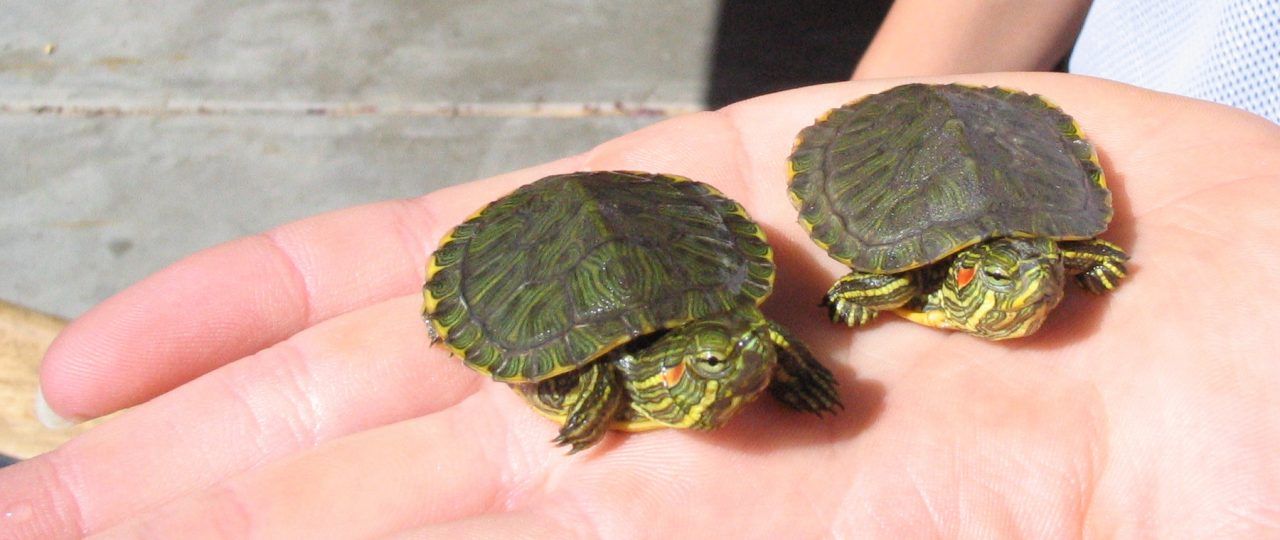 (Tetra 55 Gallon Aquarium Kit)
(Tetra 55 Gallon Aquarium Kit)
- A UV-light and heat source. (UVB and Heat Lighting Kit)
- Water heater. (Turtletherm Heater)
- Thermometer.
- Water filter to process and purify the water. (Tetra Reptofilter)
- A basking dock.
A lot of people simply assume that, since their turtle is a baby, they can simply forego some of these things and deal with them later. Don’t do this! In fact, it should be the opposite, the sooner you take care of your turtle’s needs, the less concern and worry you should have!
Let’s talk about tanks for a moment. The most important rule here is to get the biggest you can get. Bigger is always better!
Now, if you want to be exact about it, there is a very simple rule:
For every inch of turtle shell, you should provide 10 gallons of water.
Note; you don’t need to follow this guideline precisely. If you are off by a little, it’s not going to make a huge difference.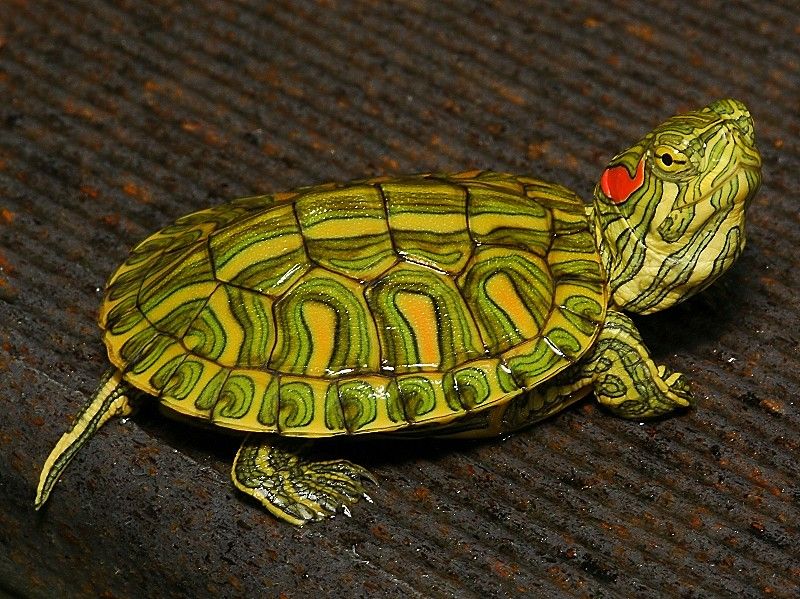 From personal experience, I can tell you that a 55-gallon tank is going to be sufficient for a fully-grown RES.
From personal experience, I can tell you that a 55-gallon tank is going to be sufficient for a fully-grown RES.
That being said, bigger is still always better. The key point here is to NOT keep your slider in something really small. That’s just misery for an aquatic turtle like a red-eared slider.
To learn about other essentials for your turtle, check out my list of essential turtle accessories.
Baby Red-Eared Slider Heat & Light RequirementsI have written a general guide on UVB lights for turtles where you can find more information, but here are a few quick guidelines:
- Your UV light should have both UV-A and UV-B light.
- You should steer clear of any UV lights with less than 5-10% UV-B output, as it won’t be strong enough.
- For your heat source, measure the basking area and put the heating lamp as far away or close to ensure the basking area is between 85 to 90 degrees.

For water heaters, I wrote up a quick go-to guide. Essentially, the gist of it is is that there are several types of water heaters, but the one you want (in all likelihood) will be a submersible water heat. They are inexpensive and work well.
For the basking area, I am a really big fan of the Turtle Topper. It’s a little bit more pricey than simply custom building your own dock (which I have done), but I simply love how it sits on the tank. It also gives your turtle a ton of extra room.
The downside to the Turtle Topper is that it won’t be big enough to fit more than 2 full-grown red-eared sliders. One or two can bask inside it easily but after that, it gets way too cramped.
Red-eared Slider Hatchling
A red-eared slider usually incubates in an egg for 2 to 3 months before it hatches. In the wild, the mother red-eared slider will usually abandon the hatchlings before they are born. This means that the baby red-eared slider hatchling must rely on natural instincts to survive. Below is a picture of a red-eared slider hatchling.
Below is a picture of a red-eared slider hatchling.
Do Red-Eared Sliders Like to be Held?
In general, red-eared sliders do not like to be held. However, this is not always the case. My first turtle was a red-eared slider that liked to be held. Every time I let him out of the tank, he would walk up to my hand. If you want to hold your red-eared slider, make sure you approach them slowly and in front of their eyes where they can see you. You want to make sure not to startle or scare your turtle.
Why Is My Baby Red-Eared Slider Not Basking?A very common complaint or concern I hear from readers is when their new baby red-eared slider won’t bask.
This is actually very common and it is generally because of one of these 3 reasons (in order of most likely to occur):
- The baby slider isn’t basking because it is stressed or scared. Moving turtles into new environments causes quite a bit of stress for a turtle. It’s common for turtles to be inactive after habitat changes.
 It could also be scared. Sliders become very skittish when they bask because that is when they are most vulnerable to predators. And to a new baby red-eared slider, you look an awful lot like a predator!
It could also be scared. Sliders become very skittish when they bask because that is when they are most vulnerable to predators. And to a new baby red-eared slider, you look an awful lot like a predator! - The temperature is too high or too low. This goes for both your water and basking temperature. If your water temperature is too high, your baby turtle might not feel the need to bask. Ditto if your basking area temperature is too low. And if it is too high it will just avoid it altogether. Keep your water temperature somewhere in the 70 to 80 degree Fahrenheit range and your basking temperature in the mid to high 80s.
- It can’t bask because it can’t get there! Lastly, sometimes you don’t see your baby red-eared slider bask because it either can’t get there or has too much trouble getting there. Always make sure your turtle’s basking spot is accessible. Test it. Make sure your turtle can easily climb up any ramps you have.
If you don’t see your baby red-eared slider basking, 99% of the time its going to be because of one of those reasons.
Now, let’s get back to what you need for your habitat.
Baby Red-Eared Slider FilterLastly, there is the filter. Your tank and your filter is probably going to be the two most expensive items you will ever have to buy for your turtle, so make sure you get it right the first time.
For filters, I would recommend the ReptoFilter. It is very cheap and can filter up to 125 gallons of water.. Check out my guide here on the best filter for turtle tank.
Some people opt to forego pricier filters like these and just get run of the mill, cheap mechanical filters.
Please don’t do this. Turtles are messy, and yes they don’t use filters out in nature, however, they also don’t sit in still water for weeks on end, like they would in a tank. Nitrate build-up in a tank can be very harmful to your turtle.
If you can provide all of these things for your turtle, you are basically doing everything you can to keep it healthy.
But, there is one more thing I wanted to mention.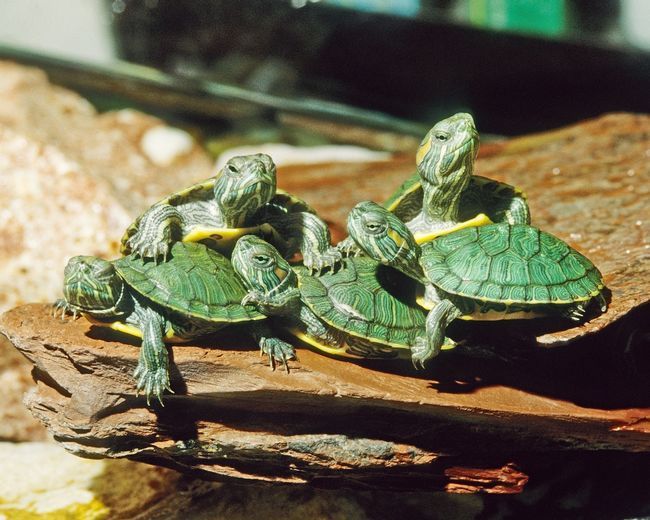 And that’s handling your baby turtle.
And that’s handling your baby turtle.
In general, try not to pick up or play with your baby red-eared slider. Now, I know that red-eared sliders can seem personable and playful but avoid picking it up and touching it as much as possible.
This rule becomes ten-times more important if you have children!
For this, let’s just make a checklist and get right down to it.
- Always wash your hands after handling your turtle. Turtles are very dirty, full of germs, and carry salmonella.
- As much as you want to, don’t play with your turtle as you would a pet cat or other animal. Turtles generally do not like touched or held. This causes lots of stress and anxiety.
- If you do need to pick up your baby red-eared slider, do it by scooping it so that it is sitting on your hand. This will give him a sense of stability and it won’t kick its feet everywhere.
- As much as you want to, try not to rub its shell.
 Turtles do not like this. Their shell is an extension of their skeleton. Imagine if somebody was rubbing on your ribs. You wouldn’t like it either!
Turtles do not like this. Their shell is an extension of their skeleton. Imagine if somebody was rubbing on your ribs. You wouldn’t like it either! - Be careful when putting your hand in the tank. Red-eared sliders don’t have hurtful bites, but they do sometimes bite. This usually happens when they mistake your finger for food.
Here’s a quick summary of the key points here:
- Check any baby red-eared slider thoroughly before purchasing or obtaining it. Sick turtles can be expensive.
- Feed your baby turtle pellets daily. Once it reaches between 2 and 3.5 inches in (shell) length, switch to every other day feedings.
- To provide a proper habitat, you’ll need a large aquarium, a water filter, basking spot, UV-light, thermometer, and possibly a water heater.
- Avoid handling your baby red-eared slider as much as possible.
- turtleholic
- Red Eared
8 Tips For Feeding & Caring For Baby Red Eared Sliders
A red eared slider is a fun, unique, and interesting pet. They are one of the most popular pet turtles in the world.
They are one of the most popular pet turtles in the world.
Baby red eared sliders are one of the cutest reptiles, it is tempting to get one as a pet. But before you do, take time to consider the care and feeding needs of these tiny turtles. Hatchlings start life no bigger than the size of a quarter!
9 Friendly Pet Snakes For Beginners...
Please enable JavaScript
9 Friendly Pet Snakes For Beginners (and Choosing the Right One)
It is possible to buy this turtle species in the United States. But, selling and buying turtles under four inches long is illegal.
If you have your heart set on a baby red eared slider, continue reading. We discuss the best feeding and husbandry tips for raising a healthy, happy turtle. We also share how to spot a good breeder and where to find one…
Table of Contents
- 1. Buyer’s Guide
- 2. Baby Red Eared Slider Habitat
- 3. Baby Red Eared Slider Tank Setup
- 4. How To Care For Baby Red Eared Slider Turtles
- 5.
 Baby Red Eared Slider Diet
Baby Red Eared Slider Diet - 6. Why Is My Red Eared Slider Turtle Not Eating?
- 7. Is My Turtle Male or Female?
- 8. Handling
- Summary
1. Buyer’s Guide
Many irresponsible owners have released their pets into the wild. It is considered to be invasive in many states.Baby Red Eared Sliders can be found for sale at many reptile expos or from private breeders online.
We do not recommend taking a baby slider from the wild, especially if they are not invasive in your area. Wild red eared sliders often do not live as long as pet species. They are also more likely to carry parasites and disease.
When looking for a breeder, you will want to find one with good reviews and a high standard of husbandry and knowledge. Look for a breeder who is transparent and is willing to respond to questions. Don’t be afraid to reach out to several potential sellers to compare their responses.
Avoid any breeder offering to sell a baby under four inches in length. Responsible breeders will only sell young adults or older juveniles.
Responsible breeders will only sell young adults or older juveniles.
The sale of turtles under four inches long is illegal in the United States, and has been since 1975.
Purchasing a healthy baby turtle will increase the chances of it growing into a heathy adult.
You will also need to decide on what morph of slider you want.
The most common red eared slider baby is the wild-type. Most wild-type sliders sell for $30 to $60. Private breeders sell specialty morphs like hypo pastel, albino, ghost, leucistic and piebald too. Rarer morphs like caramel and charcoal are sold for $1,000.
Why Are Baby Red-Eared Sliders Illegal?
The Food and Drug Administration outlawed the sale of all small turtles under four inches in size. This is because of the increased risk of a person contracting salmonella from these tiny reptiles.
A hatchling turtle’s small size makes it much more likely for young children to kiss it, or handle it without washing their hands.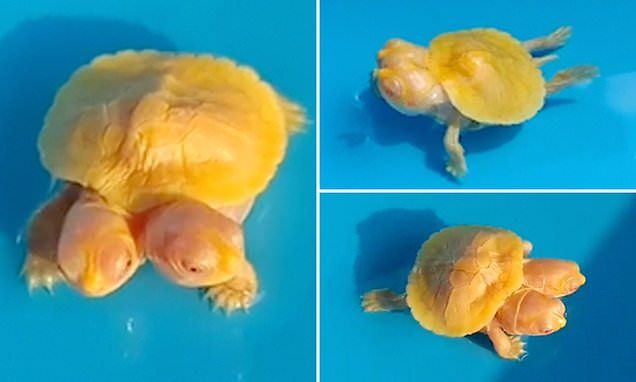 This leads to them contracting salmonella.
This leads to them contracting salmonella.
While baby turtles are more likely to cause salmonella outbreaks, turtles of all ages can carry this type of bacteria. There is no way to tell whether or not an individual turtle can make you sick. It is best to always wash your hands after handling it or any of its tank décor.
2. Baby Red Eared Slider Habitat
Baby red eared sliders need a proper and safe habitat to stay healthy and happy. Before getting a turtle make sure you can provide them with everything in the list below:
- Controlled Temperature: Baby red eared sliders are sensitive to sudden changes in temperature. Drops in temperature can cause pneumonia. Before adding your turtle to its tank, make sure the temperatures are holding steady in their normal range.
- Omnivorous Diet: Baby sliders eat vegetation, moths, earthworms, crustaceans, tadpoles, snails, and any other small animal they can catch in the wild.
 Their diet is not limited to one thing, so you should not feed them just one prey. A varied diet is both nutritionally and mentally enriching. It also helps them to get a full range of vitamins.
Their diet is not limited to one thing, so you should not feed them just one prey. A varied diet is both nutritionally and mentally enriching. It also helps them to get a full range of vitamins. - Clean Water: Young red eared sliders need very clean water for swimming and drinking. Use an aquarium pump to circulate and filter tank water. You should also test the water once a week for ammonia, nitrite, and nitrate levels.
- Stress-Free Tank: Even if their tank setup is perfect, your baby red ear can still become stressed if the environment around the tank is too noisy or busy. Keep your turtle’s enclosure in a calm, quiet room that is out of the reach of dogs, cats, or small children. Your slider will spend much less time hiding and more time basking, swimming, and exploring if it feels safe in its surroundings.
- Tank mates: Sliders can share a tank with fish, but this adds some extra challenges for tank cleanliness and turtle health.
 Babies should generally not be kept with any fish larger than guppies. However, for first time keepers, we would avoid keeping tank mates.
Babies should generally not be kept with any fish larger than guppies. However, for first time keepers, we would avoid keeping tank mates.
3. Baby Red Eared Slider Tank Setup
For every inch of your turtle’s shell length you will need to provide them with a minimum of 10 gallons of space. For adult sliders, this can mean purchasing a tank up to 120-gallons.
Because these turtles grow fast, you may want to consider buying an adult-sized tank to save money. While it may look strange to have a baby turtle in a 100+ gallon tank, your turtle will quickly grow to fill it.
Sliders are aquatic and need clean, chemical-free water to swim in.
Fill the tank with water at least twice as deep as your baby’s shell. Even as hatchlings, red eared sliders are excellent swimmers, you don’t need to worry about them drowning.
Though they love water, sliders also need land for basking and drying out.
The land area should cover no more than a third of the tank’s surface area. It should be large enough for your turtle to move around on.
It should be large enough for your turtle to move around on.
Lighting
Baby red eared sliders bask in direct sunlight in the wild. As pets, this is usually not possible as glass or plastic tanks should never be placed in direct sunlight. Instead, heat and light bulbs are used to mimic sunlight.
Turtles need both UVB and UVA lighting to stay healthy and active.
Use an ultraviolet fluorescent bulb to provide your baby slider with plenty of UV light. The light source should be securely suspended 24 inches above your turtle’s basking platform. It should also not be blocked by plastic or glass as this will filter out the UV.
Baby sliders also need a heat bulb. This can be in the form of a ceramic heater or heat lamp, as long as it warms the air and basking spot.
They thrive in water and ambient air temperatures of between 75°F and 85°F. Basking temperatures on the surface of the basking spot should be 90 to 95°F.
Monitor water, surface, and air temperatures with a thermometer to keep your baby red eared slider healthy.
Why Is My Baby Red-Eared Slider Not Basking?
Baby sliders will not bask for two reasons:
- They can’t reach the basking platform.
- The water and air temperatures are not correct.
A basking platform needs to be easily accessible, stable, and dry. Use a gently sloping ramp from the water to the basking spot to help your turtle reach the platform.
Even if they can reach the basking spot, turtles will not bask if the water temperatures are too high and/or the air and basking temperatures are too low.
4. How To Care For Baby Red Eared Slider Turtles
Babies are more likely to get sick because of their developing immune system.Caring for a baby red eared slider is different than caring for an adult slider.
Adult sliders are hardy, but babies are more susceptible to illnesses.
Young and older species will need a large tank (with land and water), an omnivorous diet (plant and meat) and warm temperatures. However, the immune systems of baby sliders are still immature. This makes them more sensitive to their environment.
However, the immune systems of baby sliders are still immature. This makes them more sensitive to their environment.
Baby sliders need smaller temperature ranges, more frequent feeding and a very clean tank.
Frequent tank cleaning, consistent temperature checks, and a quality diet are the best ways to prevent a sick turtle. Creating a care schedule is a great idea for new turtle owners.
| Day | Activity |
|---|---|
| Monday | Feed, spot clean |
| Tuesday | Feed, spot clean and check temperatures |
| Wednesday | Feed, spot clean and handle turtle to check health |
| Thursday | Feed, spot clean |
| Friday | Feed, spot clean and check temperatures |
| Saturday | Feed, spot clean |
| Sunday | Feed, partial water change, check water quality |
Schedules are helpful for keeping up with cleaning, feeding, checking temperatures and water quality. Sticking to a schedule reduces stress and makes caring for your baby slider much easier. It also provides stability for your turtle.
Sticking to a schedule reduces stress and makes caring for your baby slider much easier. It also provides stability for your turtle.
The most important part of caring for a new slider is cleanliness.
Sliders create a lot of waste, mostly in their swimming area. If not cleaned properly, dirty water will increase the risk of illness, infections, and even sudden death. Water that looks clear may still be high in the toxic ammonia and nitrites caused by decaying food and waste.
To keep their tank clean scoop out any uneaten food or visible waste every day. Every week use a gravel vacuum to remove 25% of the tank’s water. This water should be replaced with fresh, treated water. Test the water weekly to monitor levels of nitrates, nitrites and ammonia. Ammonia and nitrites should be 0, while nitrates should be 40 parts per million or below.
Baby red eared sliders are known to get sick quickly. They are more likely to develop infections.
It helps to be able to spot any injuries or unusual behaviors early on.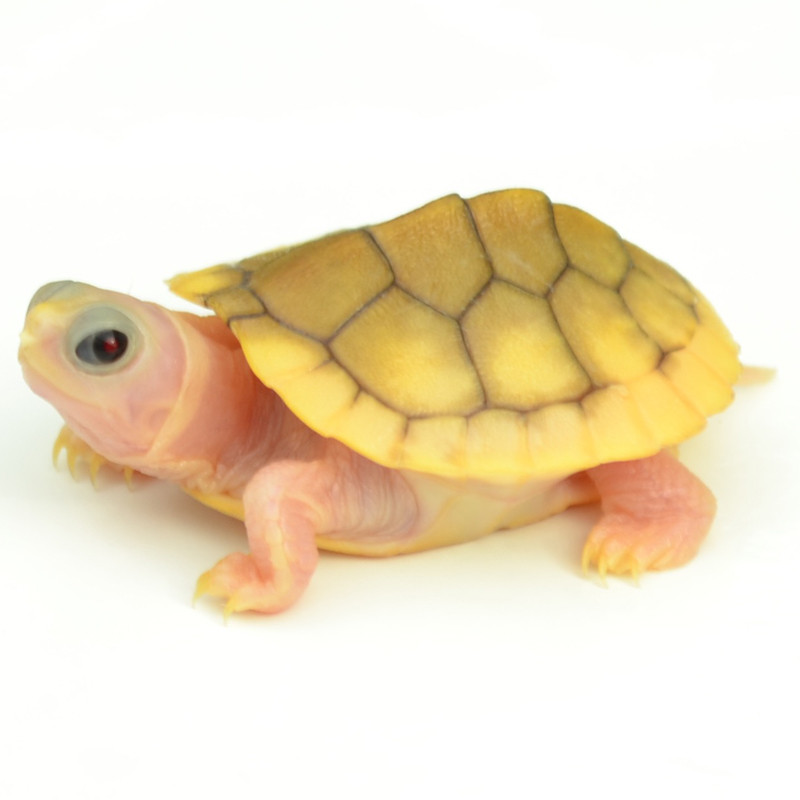 Their small size can make it difficult to spot injuries, but some common signs are:
Their small size can make it difficult to spot injuries, but some common signs are:
- Lethargy
- Refusing to eat
- Dull eyes or shell
- Loose droppings
- Patches on the shell
You can also pay attention to your slider’s behavior. Knowing if your turtle is acting differently will help you catch health and husbandry issues before they become serious.
Before bringing home your baby slider, make sure you are prepared with the right setup and equipment.
It is best to have your slider’s tank up and running at least four weeks before bringing it home. This will let you cycle the tank and control temperature and filtration properly.
5. Baby Red Eared Slider Diet
Adults and babies eat the same food items, but the ratio of meat to plant and feeding frequency is different.Baby red eared sliders are voracious eaters and should be fed every day.
A major difference between adult and baby red eared sliders is their diet:
- Adults eat primarily a 50/50 balance of plants to meat.

- Babies and juveniles need a 30/70 ratio of plants to meat.
One quarter of your baby slider’s protein content should come from commercial turtle food pellets. The rest should be made up of live or pre-killed animal prey. For plants, avoid water-based vegetables with low nutritional value (e.g. cucumbers, celery, and iceberg lettuce).
Here is a good list of high-protein and nutritious foods that are safe for a baby slider:
| Meat / Protein | Vegetables |
|---|---|
|
|
The key to a healthy diet is variety.
Rotate food items throughout the week to provide a full range of vitamins. This will also provide enrichment and keep your slider from getting bored.
Baby red eared sliders grow quickly and need to eat more often than adults.
Feed them a portion of food the size of their head. This will be around a full tablespoon for a four inch turtle. Feed them every day until they reach six months of age, after which you can then switch to feeding every other day.
To prevent choking make sure all food is cut into bite-sized pieces. A good rule of thumb is to make sure food pieces are no larger than the distance between their eyes.
They prefer to feed in the water rather than on land.
Feeding is simple, just drop their pellets and food in to the tank.
If you are feeding in the main tank then scoop out any uneaten food after 10 minutes.
Some keepers choose to feed their slider in a separate tank. This helps to avoid making the water dirty in the main tank.
6. Why Is My Red Eared Slider Turtle Not Eating?
It is very common for a baby red eared slider to refuse food during the first three days. This is due to the stress of being introduced to a new environment.
After four days most baby sliders will start eating again.
If your slider still isn’t eating after a week, or has suddenly stopped eating, the first things you should check is:
- Is the water clean?
- Are the lights on a consistent schedule?
- Is the tank in a quiet and safe area?
- Are the temperatures in the correct range?
If the tank setup is correct then move on to check your turtle’s food.
It may be that your slider simply doesn’t like the food you are offering. You can try feeding cooked chicken or beef heart to stimulate its appetite.
7. Is My Turtle Male or Female?
In very young turtles it can be difficult to accurately determine their gender.
Determining the gender of a baby red eared slider is usually more important to breeders. However, any turtle owner can become curious as to what sex their new turtle is. If you want to know whether your slider is a male or female, there are a few tips you can use.
However, any turtle owner can become curious as to what sex their new turtle is. If you want to know whether your slider is a male or female, there are a few tips you can use.
- Females’ plastrons are flat (i.e. the bottom of the shell).
- Males’ plastrons are concave (i.e. curves in towards the spine).
- The vent of a female is closer to the edge of the shell.
- The vent of a male is farther down the tail, positioned away from the body.
- Males have a thicker, longer tail than females.
- The front claws of male sliders grow much longer than females’ claws. During courtship, males will wiggle their long claws in a female’s face to get her attention.
The differences between males and females will become more obvious as they age.
Once your red eared slider reaches two years old, if it is male, it will be fully mature and have all the typical male features. Females won’t mature until they reach five years of age. This is the same for yellow bellied sliders too.
It can be hard to sex a baby red eared slider based on physical characteristics.
The best and most accurate way for finding the gender of a turtle is asking the breeder what temperature the eggs were incubated at. The gender of the hatchlings is determined by the incubation temperature. Eggs incubated at 79°F will all hatch as males, while those incubated at 88°F will all hatch as females. If incubated in between, some will be male and some female.
8. Handling
A red eared slider baby should be handled only when necessary. Turtles are usually not adaptable to being held, it can cause stress.
The best way to hold a baby red eared slider is to use your thumb and first finger on each hand in a pinching style. Have one hand on either side of the turtle and your thumbs on the bottom of the shell. Never squeeze your turtle or use more force than is necessary.
Limit the time you hold a baby red eared slider to five minutes.
Summary
There are few pets cuter than a baby red eared slider.
Remember that before buying this species, it should be over four inches in size. Buying or selling turtles smaller than four inches is against the law.
If you do decide to care for a baby red eared slider, keep in mind that they are sensitive to water quality and temperature. Clean your baby’s tank weekly to maintain pristine water conditions.
They thrive in water and ambient air temperatures of between 75°F and 85°F. Basking temperatures should be 90 to 95°F.
These turtles also need a varied diet of mostly protein to stay healthy. Feed them a portion of food the size of their head every day and rotate food items.
With the right care a baby red eared slider will keep you entertained for decades.
Let us know your best care tips below.
What should I feed the little red-eared turtles?
The main question that arises in the newly minted owner of the red-eared turtle: what to feed such an exotic pet? Providing a young individual with food requires a serious approach. From how correctly you make up the diet of your pet, its activity, health and life expectancy directly depend. Let's look at what you need to feed a small red-eared turtle at home.
From how correctly you make up the diet of your pet, its activity, health and life expectancy directly depend. Let's look at what you need to feed a small red-eared turtle at home.
Juveniles are usually given only food of animal origin. Approximately 70% of the diet should consist of small, lean fish and 30% of:
- of the offal
- insects
- Small Snails
- Casserul
- Rainbings
- Squids
- CREMICS 9000
If possible, treat your pet to live guppy aquarium fish. In general, fish is very useful for the growing organism of the red-eared.
What is the best fish to feed the little red-eared turtle?
As already mentioned, the fish should be lean. It can be pollock, blue whiting, hake, cod, navaga, perch and carp. Give the fish finely chopped and with small bones. For large fish, remove the costal bones. Raw or boiled fish to give reptiles? Here experts have not come to a consensus.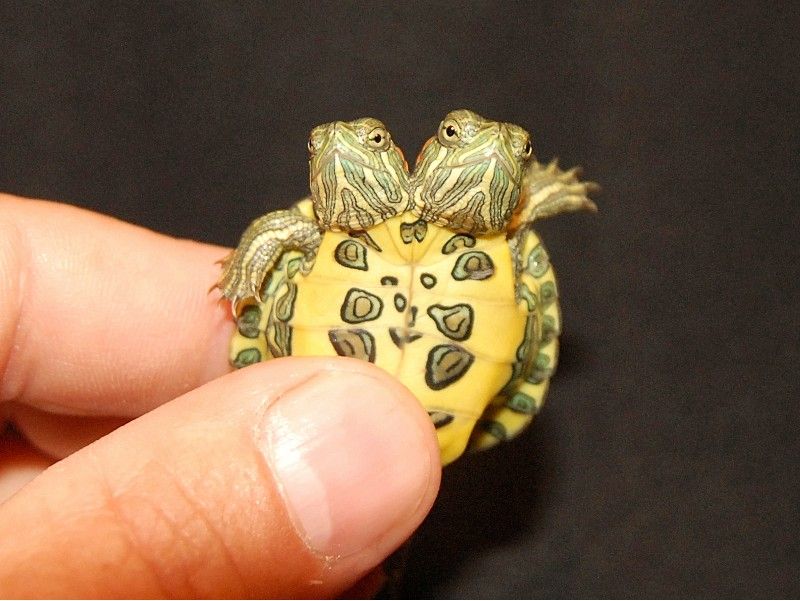 Some believe that the fish should only be raw, while others insist that it should be boiled. In our opinion, it is not necessary to boil the fish. It is enough to pour boiling water over it.
Some believe that the fish should only be raw, while others insist that it should be boiled. In our opinion, it is not necessary to boil the fish. It is enough to pour boiling water over it.
Twice a week, it is recommended to add bone meal (available at the pet store) or crushed eggshells to the red-eared food.
Dry food for small red-eared turtles
Dry food for turtles cannot get enough nutrients. It can be given to turtles from time to time if it is not possible to organize a natural meal. But in no case should a reptile's diet consist of store-bought food alone. The red-eared must receive vitamins and microelements from natural food. Constant feeding of a pet with semi-finished products negatively affects digestion, metabolism, which can eventually lead to various diseases.
What not to feed little red-eared turtles
It is not recommended to give large quantities of fatty fish and fatty meat (lamb, pork). It is strictly forbidden to offer turtles food from the human table (boiled and fried food, sausage, bread, etc. ). It is forbidden to give reptiles dry food and vitamins for cats, dogs and other mammals.
). It is forbidden to give reptiles dry food and vitamins for cats, dogs and other mammals.
Little red-eared turtles, like adults, should not be fed hot or too cold food. If the turtle dinner has been stored in the refrigerator, let it sit at room temperature for a while. You can not give food directly from the refrigerator.
Feeding schedule
If adult turtles are fed once every 2-3 days, then young turtles under the age of two years - once a day. Feed is given in the morning or afternoon. The amount of food depends on the activity of the young reptile. The serving volume is recommended to be calculated so that the red-haired woman eats food within 15-20 minutes, leaving nothing uneaten. An approximate portion is 2-3 pieces (for example, fish) of 1 cm3.
Rate the article!
[Total: 3 Average: 5]
Red-eared tortoise house keeping and care
This type of turtle is classified as a freshwater reptile. Its main feature is longish red-orange spots that are located just behind the eyes. Despite the fact that they do not have ears, they hear perfectly. Since the shield on their belly is colored bright yellow, they are also often referred to as yellow-bellies. The females of these animals are usually much larger than the males. Puberty of these animals occurs at 4 years.
Its main feature is longish red-orange spots that are located just behind the eyes. Despite the fact that they do not have ears, they hear perfectly. Since the shield on their belly is colored bright yellow, they are also often referred to as yellow-bellies. The females of these animals are usually much larger than the males. Puberty of these animals occurs at 4 years.
Red-eared slider conditions
To keep such a reptile, you will definitely need an aquarium or terrarium, with a volume of 150-200 liters. Make sure the turtle has enough water to move freely. Ideally, the more swimming space she gets, the better.
In addition, artificial land must be created for it, on which the reptile can get out to warm itself. The island must have a sloping rise, stability, as well as the absence of burrs and sharp corners.
The island should occupy at least ¼ of the surface of the terrarium and meet certain requirements.
- Heating . The temperature on it must be set at least 10 ° C higher than in water.
 Too high a temperature also does not need to be set, as the reptile can overheat.
Too high a temperature also does not need to be set, as the reptile can overheat. - Flooding . On an island, at least one side must be in the water.
- Safety . The reptile should move freely and not get stuck between the island and the glass.
- No toxicity . No toxic substances should be released from it.
- Stability . The land must stand very securely, since this type of turtle is very strong and can easily turn it over.
- Textured surface .
What do I need to buy to keep a turtle?
The most necessary things:
- 200 liter turtle tank.
- Aquarium Water Heater 100W.
- Aquarium filter (internal, but external is better).
- UV lamp for turtles with UVB 10%.
- Lamp for heating.
- Aquarium lamp.
- Thermometer.
- Land, coast, island.
Red-eared turtle feeding
Omnivorous, feeding on a wide variety of food.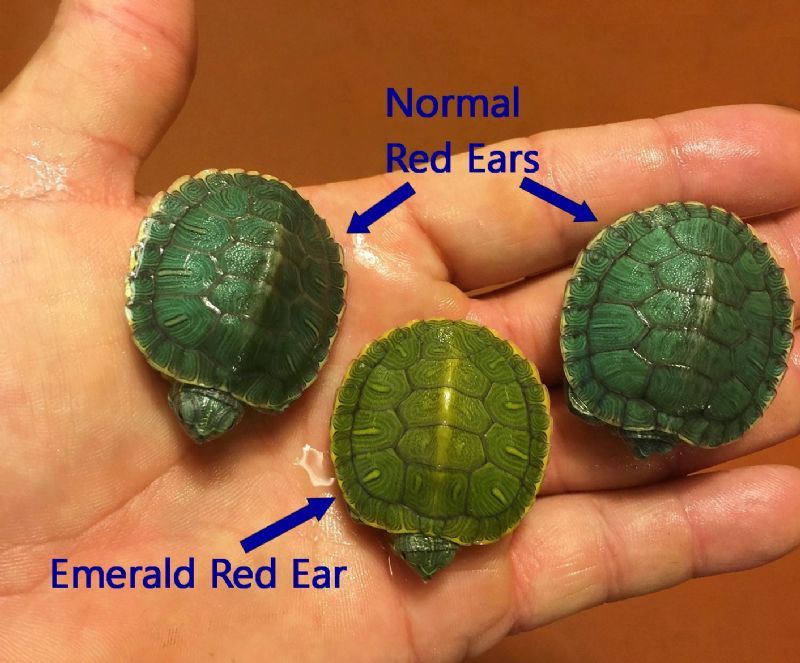 Variety is important as it keeps the turtle healthy. You can feed: food for turtles, food for aquarium fish, vegetables, aquarium plants, insects, fish, invertebrates. In addition to variety, it is important to give a balanced diet high in calcium. Like all wild animals that live at home, there is a tendency to overeat.
Variety is important as it keeps the turtle healthy. You can feed: food for turtles, food for aquarium fish, vegetables, aquarium plants, insects, fish, invertebrates. In addition to variety, it is important to give a balanced diet high in calcium. Like all wild animals that live at home, there is a tendency to overeat.
The composition of specialized feeds is selected in such a way as to give turtles all the necessary substances. The high protein content of commercial feeds allows them to be fed in small portions.
To make the feeding more balanced, add calcium and vegetable foods and your turtle will be quite happy. Please note that calcium supplements are most often already included in commercial feeds, read the labels on the packaging.
Red-eared turtles need water to swallow because they do not produce saliva. They may take food on land, but will drag it into the water to eat. You can use this to your advantage and feed them in a separate container, so the water in the aquarium will remain clean for a longer time.
Tetra, Fiori, Sera food is perfect.
As for hibernation, which the reptile can fall into during the winter period, it is desirable to avoid it. The thing is that if you are new to keeping this type of turtle, then you may simply not have enough experience in caring for it in this period. Therefore, it is not necessary to stimulate hibernation in this reptile! Firstly, unfavorable conditions can be created for it for this period, and secondly, weakened animals may simply not survive it. To keep it from hibernating, keep the temperature at a level of at least 25 ° C, and the reptile will not even remember the long winter sleep.
Turtles that hibernate under natural conditions tend to burrow into plants or silt at the bottom of a reservoir that has a shallow depth and large dimensions. During this period, reptiles remain at the bottom all the time, oxygen is absorbed by them through membranes located in their mouth, pharynx and cloaca. In addition, the depth of the reservoir, the temperature regime and the level of oxygen in it are of great importance.






